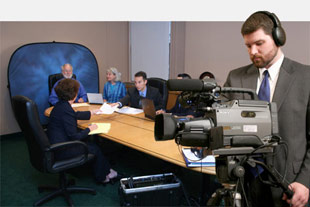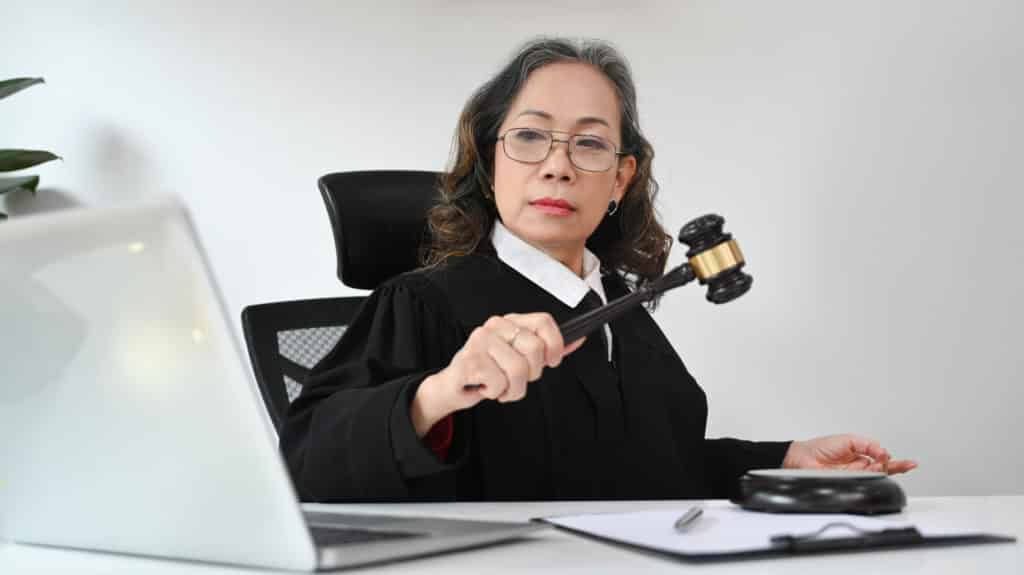Looking Into the Systems of Lawful Videography: Introduction Its Procedure in Shielding Genuine Aesthetic Testimony for Judicial Process
In the realm of judicial procedures, the duty of lawful videography stands as a foundation in preserving and offering aesthetic proof. As technology proceeds to advancement, the devices behind legal videography have come to be progressively detailed, supplying a crucial layer of credibility to testimonies caught on video.
Historic Advancement of Lawful Videography
Taking a look at the historical development of legal videography discloses a significant improvement in the recording and presentation of aesthetic proof within the legal landscape. In the past, legal proceedings greatly relied upon composed pictures and transcripts to document occasions and offer proof. Nonetheless, with the introduction of video technology, the legal market observed a paradigm change in just how visual statement was recorded and presented.
The evolution of legal videography can be mapped back to the late 20th century when improvements in video clip recording tools made it more available for usage in court rooms. This technical innovation not just improved the precision and integrity of aesthetic proof yet also reinvented the method situations were presented to judges and juries (Legal Videography). Attorneys began to acknowledge the convincing power of video recordings in conveying emotions, subtleties, and non-verbal hints that composed records or photographs alone could not record efficiently

Technology Advancements in Video Documents
What essential technological innovations have reinvented video paperwork in the legal field? The lawful field has seen substantial improvements in video clip paperwork modern technology that have actually improved the credibility and dependability of aesthetic evidence in judicial proceedings.
Additionally, advancements in video clip security and watermarking technologies have actually bolstered the protection and tamper-proof nature of video evidence, safeguarding it versus unapproved alterations or tampering. In addition, the introduction of cloud storage space services and remote gain access to capacities has streamlined the storage space, retrieval, and sharing of video evidence, assisting in seamless collaboration among lawful specialists and guaranteeing efficient accessibility to critical visual statements when required. These technological improvements in video clip paperwork have actually unquestionably changed the lawful area, improving the accuracy, integrity, and admissibility of visual proof in judicial process.
Duty of Legal Videographers in Courtroom Setups
The evolution of video clip documents modern technology in the lawful field has demanded a critical function for legal videographers in court room setups, making certain the integrity and reliability of aesthetic testimonies offered throughout judicial procedures. Lawful videographers play an essential role in catching and protecting accurate aesthetic evidence that can be essential in court cases. Their obligation includes establishing equipment, videotaping proceedings, and generating high-grade videos that properly reflect the events in the court.
Additionally, legal videographers usually function closely with legal groups to guarantee that the video clip proof aligns with the case's demands and can be properly offered in court to sustain the lawful arguments being made. Overall, the role of legal videographers in courtroom settings is essential in promoting the concepts of justice and ensuring the openness of lawful process. Legal Videography.

Ensuring Admissibility and Honesty of Video Evidence
To keep the credibility of visual evidence presented in lawful procedures, making certain the admissibility and integrity of video clip proof is a crucial responsibility for legal videographers. Admissibility describes the approval of proof by the court, and for video evidence to be permissible, it must fulfill certain criteria. Lawful videographers play an important function in making certain that the video clips they catch follow the policies of proof, such as importance, reliability, and authenticity.
Stability of video evidence entails maintaining the originality and precision of the video from the moment it is tape-recorded till it exists in court. This consists of safely keeping the video data, recording the chain of guardianship, and avoiding any tampering or changes. Lawful videographers need to stick to stringent protocols to ensure the honesty of the video clip evidence and prevent any kind of difficulties to its credibility.
Future Trends in Legal Videography
Provided the enhancing dependence on modern technology in lawful proceedings, lawful videographers are positioned to accept innovative innovations shaping the future of aesthetic statement capture and presentation. Among the popular trends coming up is the assimilation of online reality (VIRTUAL REALITY) and increased truth (AR) modern technologies into lawful videography. These innovations have the prospective to revolutionize just how visual evidence is offered in courts, allowing courts and courts to immerse themselves in the scene of the criminal activity or occurrence.
Furthermore, the usage of expert system (AI) formulas for video evaluation is expected to streamline the procedure of evaluating and analyzing big quantities of video footage. AI can assist in determining key moments, abnormalities, and patterns within videos, boosting the effectiveness of lawful investigations.

Conclusion
To conclude, lawful videography has played a critical role in offering genuine visual proof for judicial proceedings. Via technological innovations and the knowledge of lawful videographers, the integrity and admissibility of video clip evidence are guaranteed in courtroom setups. As legal videography remains to advance, it will be vital to support requirements that preserve the accuracy and dependability of aesthetic statement for the future of lawful proceedings.
Taking a look at the historic progression of lawful videography exposes a substantial change in the catching and discussion of aesthetic proof within the legal landscape.The development of video clip documentation technology in the lawful have a peek at these guys field has required a crucial function for legal videographers in court room settings, guaranteeing the honesty and integrity of visual testimonies offered throughout judicial proceedings. Additionally, legal videographers typically function carefully with legal teams to make sure that the video clip proof aligns with the case's requirements and can be efficiently provided in court to support the lawful debates being made.To maintain the integrity of aesthetic proof presented in legal proceedings, ensuring the admissibility and integrity of video proof is an essential responsibility for lawful videographers. As lawful videography proceeds to progress, it will be necessary find to promote requirements that preserve the accuracy and reliability of aesthetic testament for the future of lawful procedures.
Comments on “Why Legal Videography is Vital for Accurate Legal Paperwork”